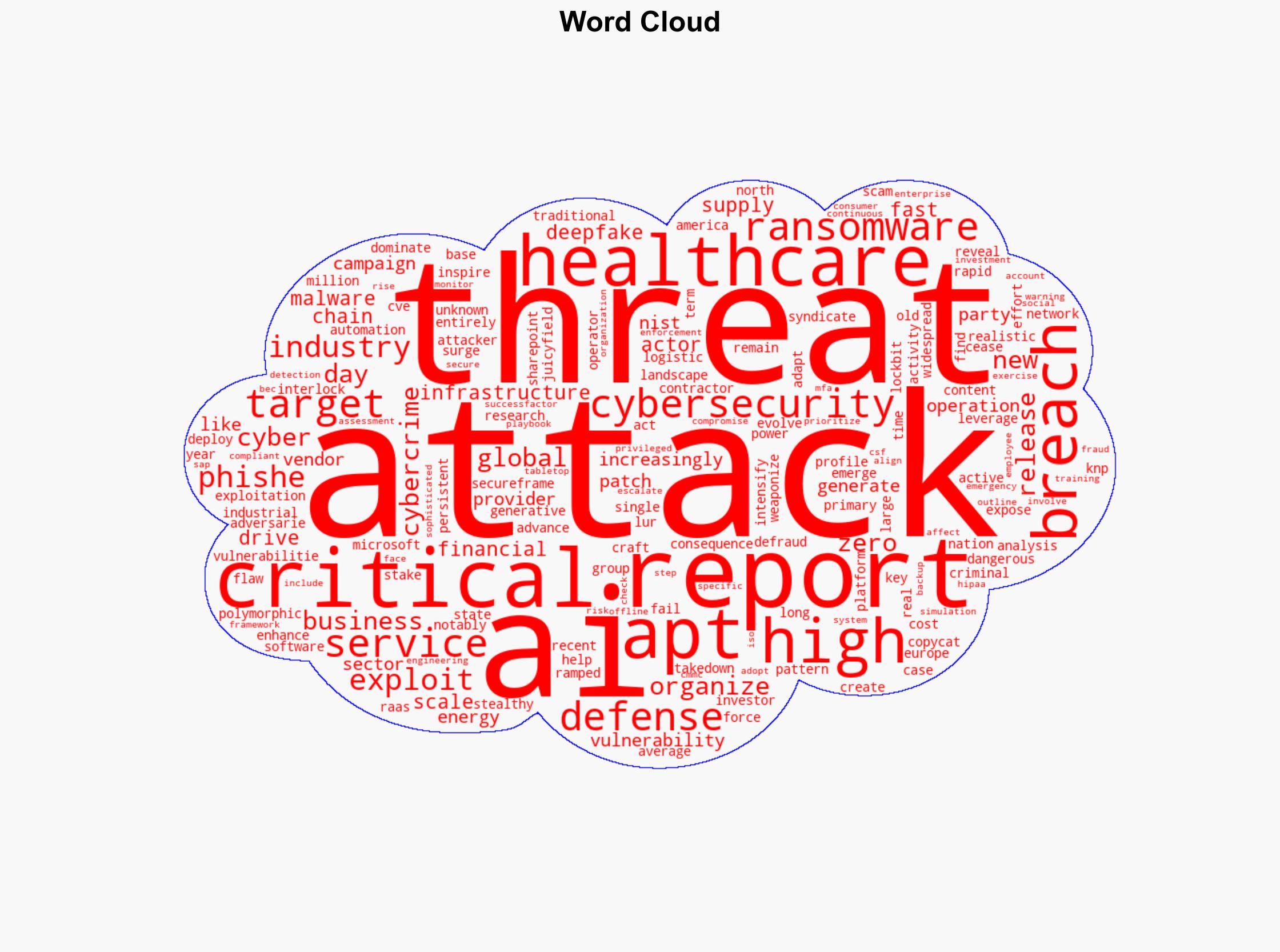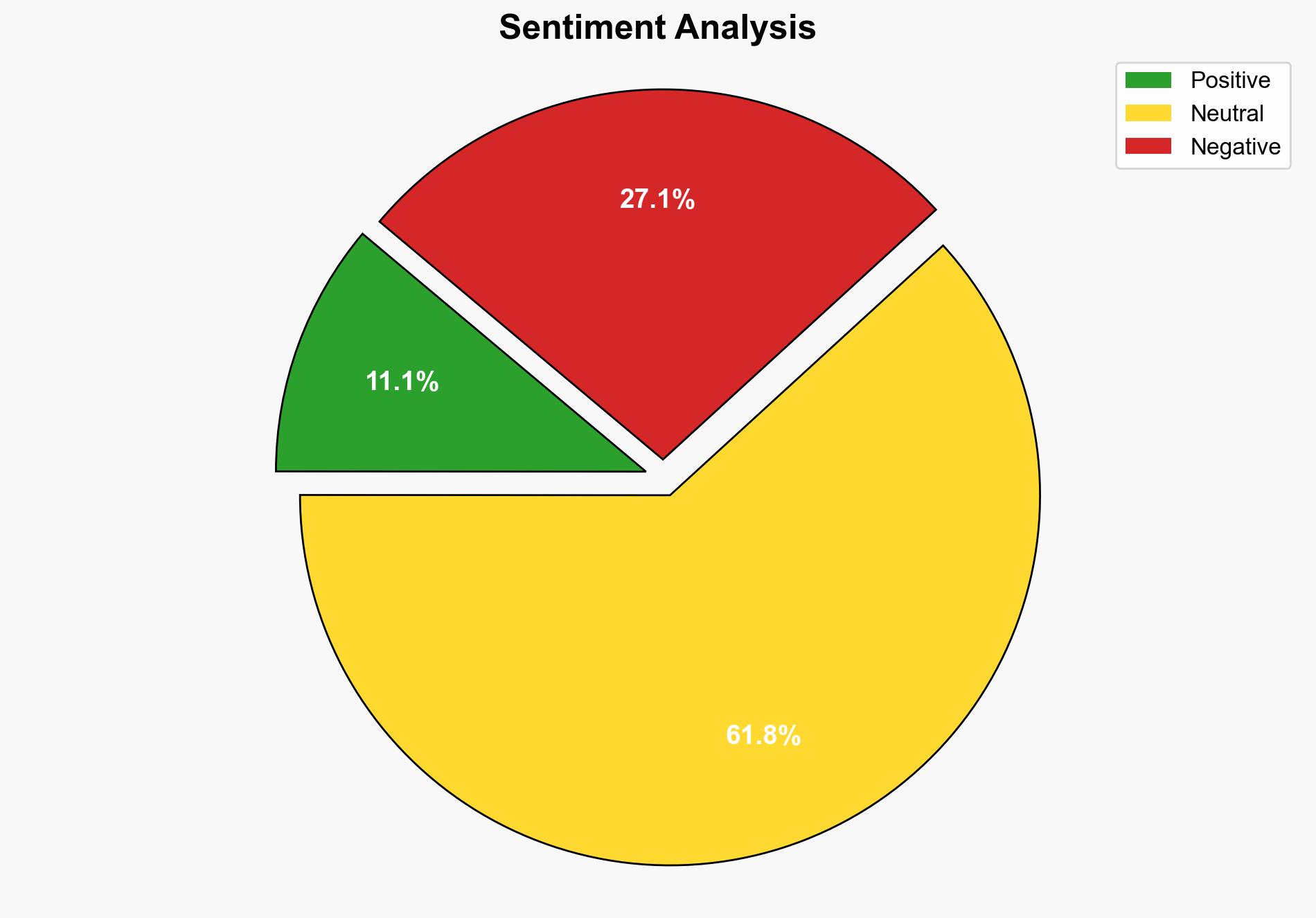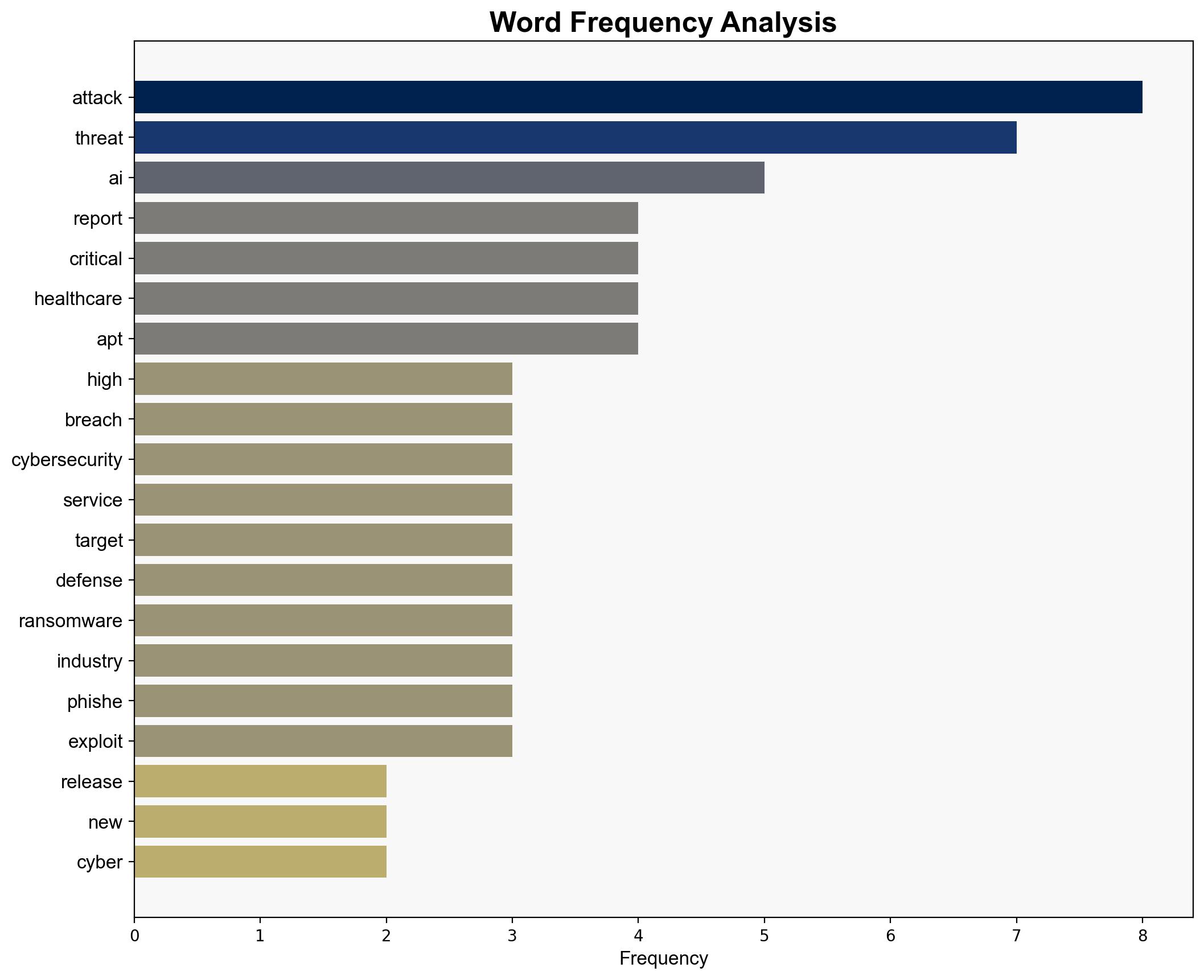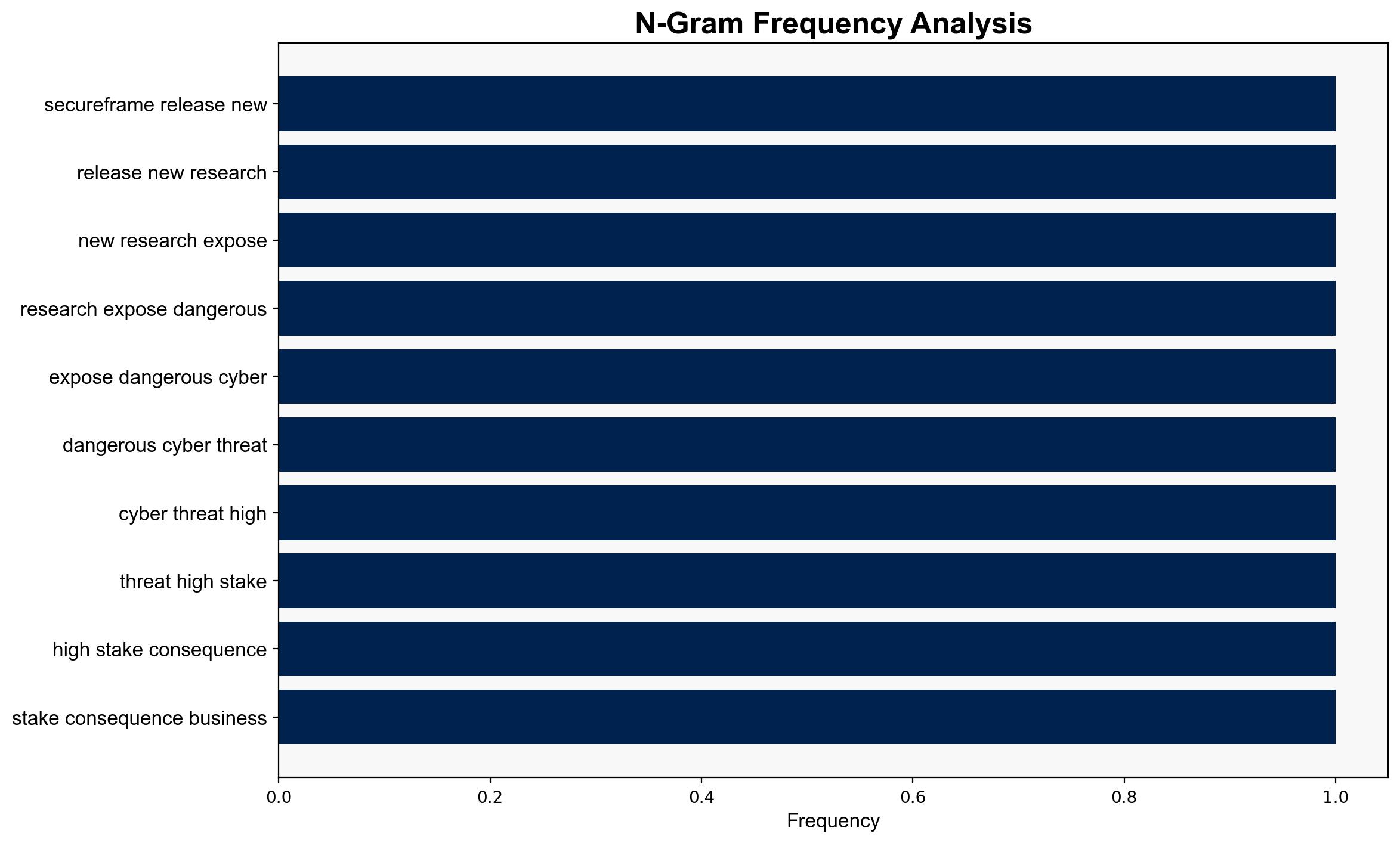AI-Powered Attacks Zero-Days and Supply Chain Breaches Top List of 2025’s Most Dangerous Cyber Threats – Vmblog.com
Published on: 2025-08-07
Intelligence Report: AI-Powered Attacks Zero-Days and Supply Chain Breaches Top List of 2025’s Most Dangerous Cyber Threats – Vmblog.com
1. BLUF (Bottom Line Up Front)
The most supported hypothesis is that AI-enhanced cyber threats, particularly those exploiting zero-day vulnerabilities and supply chain weaknesses, will dominate the cybersecurity landscape in 2025. This conclusion is drawn with a high confidence level due to the convergence of technological advancements and the increasing sophistication of threat actors. Immediate action is recommended to strengthen cybersecurity frameworks and enhance real-time threat detection capabilities.
2. Competing Hypotheses
Hypothesis 1: AI-enhanced cyber threats, including zero-day exploits and supply chain breaches, will be the primary drivers of cybersecurity incidents in 2025. This is supported by the rapid evolution of AI technologies and their application in crafting sophisticated attacks.
Hypothesis 2: Traditional cyber threats, such as ransomware and phishing, will continue to be the most prevalent, with AI playing a supportive rather than a leading role. This hypothesis considers the persistence of conventional attack methods and their proven effectiveness.
Using Analysis of Competing Hypotheses (ACH), Hypothesis 1 is better supported due to the documented rise in AI-driven attacks and the strategic focus of threat actors on exploiting new vulnerabilities and supply chain weaknesses.
3. Key Assumptions and Red Flags
Assumptions:
– AI capabilities will continue to advance at a rapid pace.
– Organizations will not adequately adapt to emerging threats.
Red Flags:
– Potential overestimation of AI’s role in cyber threats.
– Lack of specific data on the effectiveness of AI-driven defenses.
4. Implications and Strategic Risks
The increasing sophistication of AI-powered cyber threats poses significant risks to critical infrastructure, healthcare, and financial services. The rapid exploitation of zero-day vulnerabilities could lead to widespread disruptions. Additionally, the reliance on third-party vendors increases the risk of supply chain breaches, potentially affecting large enterprises globally. The geopolitical landscape may also be impacted as nation-state actors intensify cyber campaigns.
5. Recommendations and Outlook
- Enhance cybersecurity frameworks by adopting AI-driven threat detection and response systems.
- Conduct regular supply chain risk assessments and enforce stringent vendor security protocols.
- Implement continuous employee training programs focused on recognizing AI-enhanced phishing and social engineering tactics.
- Best Case Scenario: Organizations successfully integrate AI into their cybersecurity defenses, significantly reducing the impact of cyber threats.
- Worst Case Scenario: Widespread adoption of AI by cybercriminals leads to unprecedented levels of disruption and economic loss.
- Most Likely Scenario: A mixed landscape where both AI-enhanced and traditional cyber threats coexist, requiring adaptive defense strategies.
6. Key Individuals and Entities
– LockBit
– JuicyField
– SAP SuccessFactors
– Microsoft SharePoint
7. Thematic Tags
national security threats, cybersecurity, counter-terrorism, regional focus





